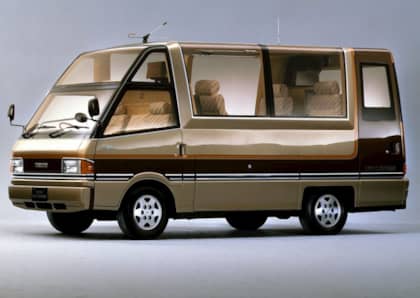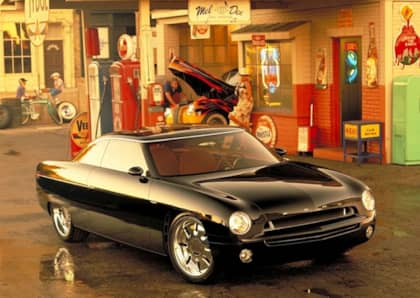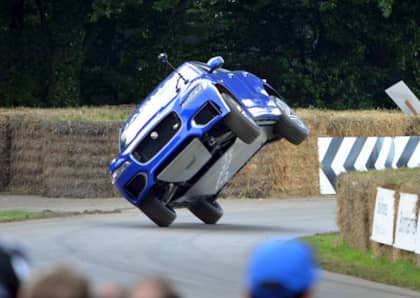5 of The Weirdest, Wildest, But Totally Necessary Automotive Features Of All-Time
Not all weird car features make sense at first, but if you do a bit of digging into the circumstances surrounding their design, you can often discover the how and why of a vehicle's unusual equipment. Automakers hate to spend money on something unless they really have to, so even if it seems strange to you that feature made sense to at least a few executives working hard to build the best possible car for the budget they'd been allotted.
Which of the weirdest car features turned out to be the most necessary? Let's take a look at the wildest equipment ever fitted to a car that also qualifies as a 'must-have.'
5. The Lamborghini Countach's Periscope
Not many people get the chance to spend time behind the wheel of a Lamborghini Countach, but those who do are instantly made aware of just how claustrophobic the cabin can feel. Specifically, the Italian automaker's most famous model emphasizes form over function in almost every respect, and outward visibility is no exception.

To combat this problem, the Countach's designers implemented two radical features. The first? Scissor doors that opened upwards rather than outwards were there partly so that owners could see behind the coupe while reversing. The second? A periscope.
You're reading that right. The original prototype version of the Countach featured something called a 'periscopica,' which was installed on the first 150 examples to be built. The system included a hidden, roof-mounted viewing port that was intended to complement the tiny rear window fitted to the car. It allowed drivers to glance up to the car's ceiling and use an additional angled mirror that reflect the image presented by the periscopica's unfettered sightline.

Although the feature had been part of the LP 500 concept that presaged the Countach, the full system was never fully implemented in the production LP 400 model, as testers complained about having to take their eyes well off the road ahead to see what still amounted to only a smidgen of the landscape behind them. The glassed-in tunnel in the roof remained in the earliest examples, however, providing additional light and, if you craned your neck and cranked the rearview mirror, a periscope-like view behind the car. Today, these Periscopica cars commands serious dollars on the collector market—all for a feature that even Lamborghini thought was a little too outrageous to sell.
4. The Volkswagen Beetle's Spare Tire-Powered Windshield Washer
The original Volkswagen Beetle was intended to offer ultra-affordable basic transportation to the widest range of potential buyers. With that in mind, it's perhaps no surprise that VW did its best to cut costs wherever it could, while still offering the features it needed to be competitive at the low end.

The perfect example is Volkswagen's rather unusual method for keeping the windshield clean. Rather than go through the trouble and cost of designing and installing a pump for washer fluid, they instead created a unique valve that attached to both the front-mounted spare tire's valve stem and the washer fluid reservoir. The valve was designed to use the compressed air from the tire to shoot fluid at the windshield at the push of a button.
The Beetle's owner's manual asked drivers to keep the spare inflated to 43 psi at all times, and the valve was designed to keep psi inside the tire steady at a minimum of 26 psi, at which point you could no longer clean the windscreen. It's not the most elegant of systems, but it beats having to hand-pump the fluid, which was what VW asked Beetle drivers to do prior to the early 1960s. Porsche would later employ a similar system in the 914.
3. GM's Vacuum Ashtray Systems
The 1950s were full of all sorts of bizarre car equipment, but it's hard to find many of these weird features that were truly 'necessary.' Of the bunch, GM's experiment with vacuum ashtrays might be the most likely candidate for that particular title.

Wait a minute—how could a system that makes use of a vacuum to suck cigarette butts from the ashtray into a glassed-in container jar be anything other than a short-lived novelty? Think about it from the perspective of a convertible owner: rather than flicking a butt out the window and causing a grass fire, or having ashes sucked out of their trays and then deposited all over the interior by swirling winds with the top down, you can instead just dump your cigarette into a small silver funnel and never have to think about it again. At least, until it's time to empty the jar.
2. Mitsubishi's Twin-Stick Gearbox
Sometimes the word 'necessary' refers to decisions made due to very specific engineering choices that weren't completely thought through from the beginning. Witness Mitsubishi's Super Shift transmission system (also known as the 'Twin-Stick' when sold as a rebadged Dodge or Plymouth).

When building its first front-wheel drive car in the early 1970s (the Mirage), the company's designers elected to place the engine directly overtop the transmission to keep its package as compact as possible. This was problematic, given that Mitsubishi also decided to take a motor designed for a rear-wheel drive setup and simply install it horizontally.
The biggest issue? Its off-the-shelf transmission manual transmission was technically 'spinning' the wrong way when taking power down from the clutch, giving it multiple reverse gears and only a single forward gear.

By adding a second idle shaft, Mitsubishi was able to not only create a transfer case of sorts that transmitted power in the proper direction, but it was also able to 'split' gear ratios and offer eight forward speeds and two reverse speeds. Mitsubishi called one set of ratios 'Power' and the second 'Economy,' and the setup lasted in some markets all the way until 1990. 'Necessary?' Technically, yes. 'Useful?' You be the judge.
1. The Mercedes-Benz SLS's Explosive Door Bolts
Gullwing doors look cool, but from a crash safety perspective they're a bit of a nightmare. Not only are the doors expected to pull double duty in terms of meeting side-impact and roof crush requirements, but you're also going to have a really hard time opening them should you accidentally flip the vehicle upside down.

Historically, there have been a number of ways car companies have dealt with the latter issue—including glass that can be kicked out by contortionist occupants in the DeLorean DMC-12—but by far the wildest is found in the Mercedes-Benz SLS-Class. This near-supercar was outfitted with explosive bolts that are powerful enough to blow each door completely off of its hinges in the event of a roll-over.

Sure, you're still going to have to do a bit of work to push the doors out and away from the car and crawl to safety, but as far as car equipment goes this is one weird feature that might end up saving your life.
Looking for more strange car features? Check out this round-up of unusual safety gear that automakers have stuffed into vehicles over the last 100 years.











